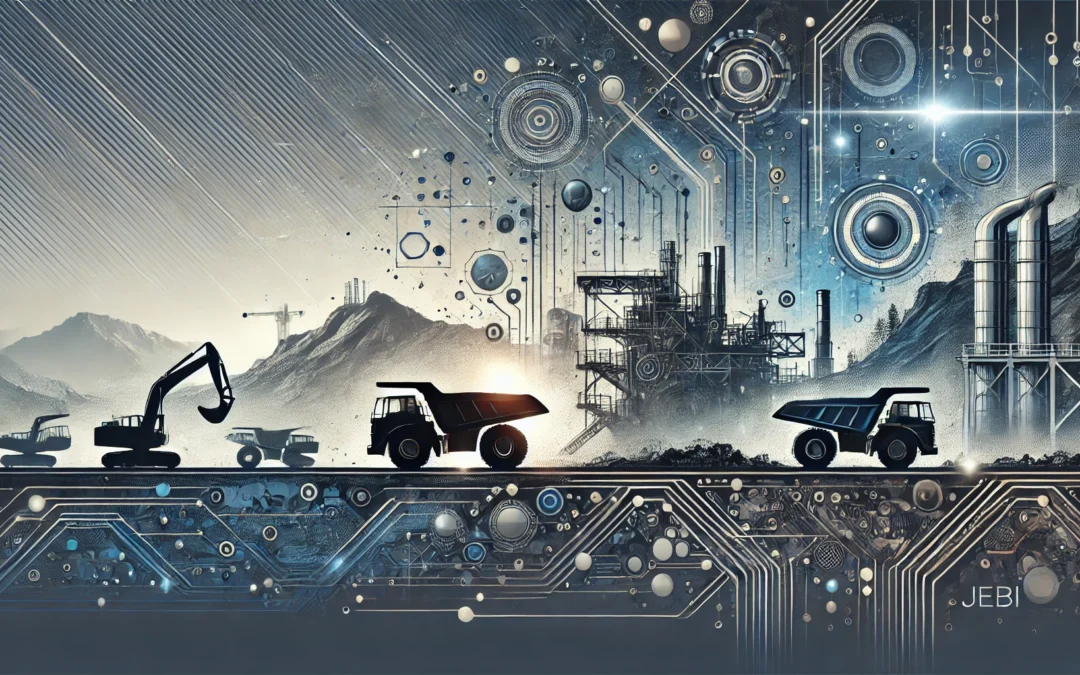In the high-stakes world of mining, every moment of downtime translates into significant financial losses. One often-overlooked culprit? Equipment wear. Ground Engaging Tools (GETs), the teeth and edges of mining equipment, play a pivotal role in operations but are prone to wear and failure. AI-powered wear detection is changing the game, and here’s how.
1. The Cost of Equipment Wear
GETs are vital for excavation, but they operate in harsh environments, facing constant abrasion from rocks and debris. Traditionally, wear detection relies on manual inspections or reactive responses to failures. These methods are not only inefficient but also risky:
- Unplanned Downtime: A single missing GET can halt operations, costing mining companies thousands of dollars per hour.
- Safety Risks: Worn or missing GETs can lead to hazardous situations, such as broken equipment or projectiles.
- Inefficient Resource Usage: Undetected wear leads to overuse of resources and increased operational costs.
2. How AI Detects Wear Before It Happens
AI-powered wear detection tools like Jebi’s GET Smart solution are eliminating the guesswork by offering real-time, automated insights. These systems use advanced computer vision to monitor GETs during operation, detecting signs of wear or damage with unparalleled accuracy.
- Real-Time Monitoring: AI analyzes images or sensor data from mining equipment in real time, flagging wear as soon as it appears.
- Precision Detection: Unlike manual inspections, AI systems detect micro-level changes in wear patterns, allowing operators to act before failures occur.
- Predictive Insights: AI algorithms forecast wear progression, enabling proactive maintenance planning.
“With AI-powered wear detection, we’ve reduced unplanned downtime by 35%, saving millions annually.” – Operations Manager, Mining Corporation
3. Insights Beyond Wear: The Hidden Benefits
AI-powered wear detection doesn’t just catch worn-out GETs—it provides a wealth of actionable insights that extend across mining operations.
- Optimized Replacement Cycles: By predicting exactly when a tool will fail, companies can replace GETs only when necessary, reducing waste and costs.
- Increased Equipment Lifespan: Continuous monitoring ensures wear is addressed early, prolonging the life of expensive machinery.
- Safety Improvements: Detecting wear proactively reduces risks to both equipment and personnel, creating a safer working environment.
- Data-Driven Decision-Making: AI systems provide detailed reports, helping operators optimize equipment usage, plan maintenance schedules, and allocate resources more effectively.
4. The Broader Implications for Mining
The introduction of AI-powered wear detection is more than just a technological upgrade—it’s a paradigm shift in how mining operations are managed.
- Shift from Reactive to Proactive Maintenance: Instead of responding to failures, operators can anticipate and prevent them, fundamentally changing operational workflows.
- Increased Sustainability: By reducing waste and extending equipment life, wear detection contributes to more sustainable mining practices.
- Scalability: AI systems can be adapted to monitor not just GETs but a wide range of mining equipment, creating a unified solution for operational oversight.
5. The Future of AI in Wear Detection
The evolution of AI in wear detection is far from over. Emerging technologies such as machine learning, edge computing, and advanced sensors are paving the way for even more precise, efficient, and scalable solutions.
At Jebi Technologies, we are at the forefront of this innovation. Our AI-powered tools are designed to empower mining companies to operate more safely, efficiently, and sustainably. By turning data into actionable insights, we help clients reduce costs, enhance safety, and stay competitive in an ever-evolving industry.
